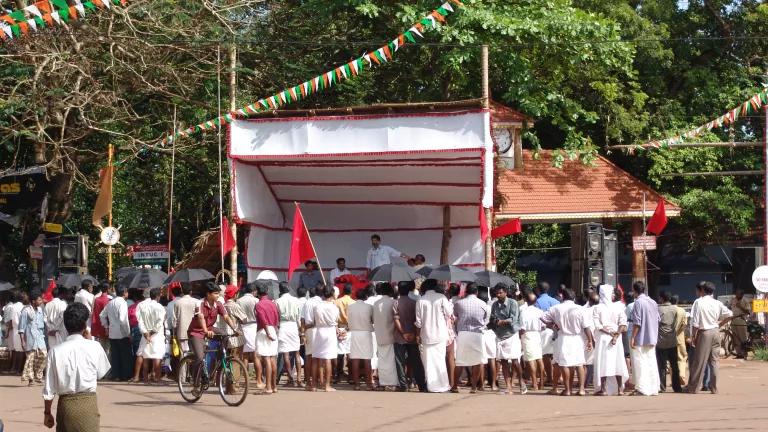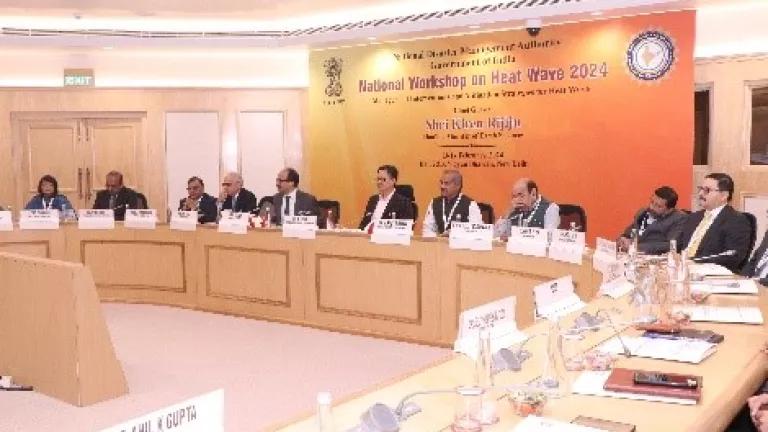India Announces Stronger Climate Action
Prime Minister Modi discussed several concrete measures which will deepen India’s action on climate change.

Co-authored with Madhura Joshi Lead Energy Access and Climate Policy Consultant, NRDC India Initiative
India is one of the few countries on its way to meet its Nationally Determined Commitments stated in the Paris Agreement in 2015. Speaking at the Climate Action Summit in New York, Prime Minister Modi announced an ambitious plan for India’s climate actions, including a massive scale-up of renewable energy.
As Prime Minister Modi said: “the scale of global action required to combat climate change is still lacking…We need a comprehensive approach to include values, lifestyles, and development priorities to combat climate change.” He added that India has come with a strong roadmap and is taking concrete steps domestically.
India is a growing “energy-thirsty country” with large developmental needs. India is third largest GHG emitter, but its per capita emissions are only at a third of the global average. With a view toward meeting India’s future needs, PM Modi discussed several concrete measures which will deepen India’s action on climate change.
Five key areas to highlight are:
1. Renewable Energy – Powering India’s future
Going beyond what was highlighted at Paris, PM Modi announced that “India is committed to achieving 175GW by 2022. India further commits to increase its renewable energy capacity to 450GW.” Achieving 450 GW of renewable energy capacity would be more than five times the country’s current renewable capacity at around 81 GW. And, it is more than India’s total installed electricity capacity of 360 GW from all sources (including coal-fired power plants). That is a huge increase in renewable energy capacity!
India’s electricity needs to serve its millions of underserved populations and meet its growth aspirations. India’s electricity demand, as per Bloomberg New Energy Finance, is likely to increase six-fold from 356 GW to 2,300 GW by 2050. Renewable Energy will play a key role in meeting India’s future needs.
India’s renewable energy ambition is backed by strong domestic actions. India is almost halfway toward to meeting its target of 175 GW of renewable energy by 2022. Recent trends and announcements by states in India also show an increase in ambition to power India’s future by renewable energy at the sub-national level.
At the state-level, Rajasthan released its new Solar Policy 2019 with the aim of building 50 GW of solar capacity in the next five-six years. In September 2019, Gujarat took the lead in announcing that it will not give fresh permission for setting up new coal plants in the state, with plans to boost renewable capacity to 30 GW by 2022. Similarly, Chhattisgarh, a state with third-largest coal reserves in India, has also decided to not build new coal plants.
2. Sustainable Mobility
PM Modi stressed that e-mobility solutions are being fast-tracked by India. He also added that India is expanding its bio-fuel mixing program to reduce the share of crude oil used in India.
Increasing the fleet of electric vehicles and its charging infrastructure in India will be key to improve air quality in cities, enhance energy security by reduced dependence on imported crude, and is also a key solution to fight climate change.
India has one of the lowest motorization rates in the world. The transport sector in India, is one of the fastest growing sectors in India, despite the recent downturn. This demand for mobility solutions is projected to increase even further.
Electric Vehicles provide a sustainable solution to meet this growing demand. Seven states in India have already adopted electric vehicle policies, and others such as in Telangana, Gujarat, have developed draft policies. Around 14 states in total have draft or accepted EV policies. India’s national policy on electric mobility, such as FAME-II, and state-level policies are putting India on the right track to rein in future emissions.
3. Water Preservation
Talking about the water preservation, PM Modi announced, “water conservation, rainwater harvesting, and rejuvenation of water bodies is critical to India. We have launched a Jal Shakti Abhiyan (water mission) to achieve these measures.”
India is a water scarce nation. According to estimates, in June 2019 around 44% of India’s areas were under various degrees of drought conditions. Parts of several states such as Maharashtra, Gujarat, and Karnataka in India have struggled with serious drought conditions. Thermal power projects in parts of Maharashtra were shut down because of unavailability of water. Large metro cities such Bangalore and Chennai are facing massive strain to meet their water needs.
A combination of rapid urbanization, insufficient infrastructure, and climate change is intensifying the stress on India’s water resources. To ensure complementarity in domestic action on water, the government also established a new Jal Shakti ministry to work on all water related issues ranging from supplying clean drinking water, inter-state and international shared water resources and disputes, to river cleaning projects.
4. Coalition Toward a Resilient Future
India is also keen on fostering international cooperation to fight climate change. Prime Minister highlighted that India along with France set up the International Solar Alliance (ISA). 80 countries have signed ISA’s framework agreement. ISA promotes and facilitates cooperation on solar among developing countries.
Along the lines of ISA, Prime Minister Modi announced establishing, the International Coalition for Disaster Resilient Infrastructure (CDRI), PM Modi invited all countries present to join the Coalition. Like ISA, the Coalition for Disaster Resilient Infrastructure is an international organization in the making with over 30 countries. The coalition will work towards a common goal of establishing infrastructure which is resilient to pressures of climate change and environmental disasters. India has pledged INR 4.8 billion (Around USD 70 million) to the CDRI.
5. Low-Carbon Pathways
In his address, PM Modi highlighted that India and Sweden along with other partners will be launching the “Industry Transition Group.” The group will develop low-carbon pathways with the aim of achieving net-zero emissions by 2050 in hard-to-abate industries such as steel and cement.
PM Modi also spotlighted India’s cooking energy program which provided clean cooking gas connections to 150 million households. The objective of the program is to reduce and eliminate exposure of women and children to indoor air pollution due to solid fuel burnt for cooking. About 480,000 premature deaths annually due to direct exposure of the households, and another 270,000 due to “indirect” exposure outdoors. Stopping the use of solid fuels is also an important step to mitigate local air pollution.
He also spotlighted India’s commitment to phase out single-use plastic completely by 2022 and hoped that this will serve as an example for other countries to follow.
Financing the Transition
Domestic priorities drive India’s climate actions. But increasing global climate finance will be critical for developing countries to meet their NDC target and scale up ambition.
At the same time, a discussion paper by the Ministry of Finance, India, finds international action on climate finance inadequate. The paper argues that the scope, scale, and speed in adding new and additional international climate finance, and technological and capacity building support, discussed under the Paris Agreement, has not translated into reality. International climate finance solutions will be critical for ratcheting up climate actions in developing countries.
PM Modi concluded with a resounding call for action saying, “the time for talking is over. The world needs to act now!




